By Leah Clark
Because of the popularity of Hollywood fad diets, the term 'gluten-free' has become more and more popular over the past decade. While not necessarily intending to do so, this trend actually brought great change to individuals suffering from celiac disease, non-celiac gluten sensitivity, and inflammatory bowel diseases. With new food products coming to market and more menu items coming to restaurants, it has provided a new way for people that cannot eat gluten to experience food. As someone that was diagnosed with both celiac disease and #Crohn's disease ten years ago, I can confidently say I know my way around a nutrition label. That being said, not everyone that is on a gluten free diet, or that is planning on starting one, knows what to do. When discussing your treatment plans for your IBD with your doctor, discussing diet changes should not be forgotten. So, is going gluten free right for you?
Bacon, eggs, potatoes...who says living a gluten free lifestyle means giving up your favorite breakfast foods!
What is gluten?
With all these terms of gluten free, gluten sensitive, wheat-free, gluten-friendly, and more, it can be confusing to know what it all means! Isn't flour gluten, or is it any grain? To start with the basics of a gluten free diet, one has to know what to look for. Gluten is the proteins found in wheat, rye, and barley. So when on a gluten free diet, wheat, rye, and barely are the foods to avoid.
How to read labels
Okay, so know that I know what to avoid, what are the necessary steps to ensure that I don't eat the wrong foods? Check labels on everything. Even if you think something may be gluten free, it never hurts to read the nutrition labels. Certain foods don't have labels, such as fruits and vegetables; however, these foods do not consist of any other ingredients other than what they are called-apples, carrots, oranges, etc. Foods that are made with other ingredients, such as cereal, pasta, and crackers, are foods that need to be checked. Luckily, most companies are good about food labeling, so boxes will often say "Gluten Free" or "Contains: milk, soy, and wheat."
However, sometimes there are tricky labels that you need to look out for. For example, the cereal Rice Krispies is not #glutenfree. The ingredients include rice, sugar, salt, malt flavor, and vitamins and minerals. The key word here is malt. Although the other ingredients are okay, the malt flavor is not. Malt is a tricky word because it is not wheat, rye, or barely; however, malt is a derivative from barley. Therefore, Rice Krispies are not gluten free. Words like malt extract, malt flavoring, barley malt, wheat-germ, and non-gluten free oats, are words to look out for.
What foods can I eat?
A good rule of thumb is to stick to foods that are labeled gluten free, or are"natural" foods. By natural, I mean foods that are not made with large amounts of ingredients. A good starting gluten free grocery
list could include:
Fruit-apples, bananas, kiwi, oranges, grapes, strawberries, raspberries, blueberries, plums
Vegetables-carrots, corn, green beans, lettuce, spinach, broccoli, radishes, celery, zucchini
Milk-can be almond, dairy, soy, cashew
Protein-lean meats, chicken, eggs
Dairy products-cheese, gluten free yogurt, butter, cottage cheese
Grains-white or brown rice, gluten free oatmeal, gluten free breads and pastas
Gluten free pizza? Yes please! Restaurants have gotten better at properly preparing gluten free dishes, including delicious pizza, to make it easier for people to enjoying going out to eat.
Gluten free diet can not only be good for your gut, but also for other parts of your body because of how healthy a gluten free diet can be. Many of the foods listed are healthy in their nature, like lean meats, fruits, and vegetables. However, just because something says "gluten free," does not mean it is part of a healthy diet. Sure, chocolate is gluten free, but if all you ate was chocolate, would that be the best way to go on a gluten free diet? Probably not.
But I thought gluten free foods always tasted bad?
A common misconception about gluten free food is that it tastes gross. While yes, there are some bad gluten free food products out there, this is no different than there being bad gluten food. It all depends on your preferences and experimenting with different brands. Making home-made gluten free brownies is not as simple as using a Pillsbury box recipe of 'normal' brownies (although, there are some Pillsbury gluten free baking products that taste great). The point is to try new brands and baking techniques that work for you. I've spent the last ten years of my life finding my favorite brands of pastas, crackers, and bread, and I can honestly tell you, it wasn't I traveled to an entirely different country and tried their gluten free bread that I found my favorite. Gluten free food can taste just as good, if not better, than the food you're used to! It just takes some time and preparation.
How do I know if gluten free is right for me?
Honestly, it all depends on what you and your doctor think is best for you. I had to go gluten free because I was diagnosed with a disease that literally required me to. Yet, I know several people with Crohn's or colitis that have gluten free diets that do not also have celiac disease. In short, if eating certain foods make you feel bad, do not eat those foods! There are other foods I avoid even though they are gluten free, such as popcorn and caffeinated sodas, because I know they upset me. It truly depends on each person and if it is going to help with your treatment for IBD.




